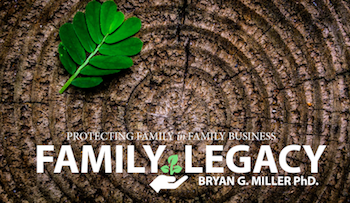“Okay, it sounds like I’m the problem,” the CEO said. I was in a one-on-one meeting reviewing the aggregate results of our in-depth interviews with his leadership team before meeting with the larger group to work on creating action plans to address some issues in the organization. His voice sounded relaxed, matter-of-fact. I didn’t sense any defensiveness. I glanced at his face, no sarcasm, no guilt, no embarrassment. “What do you mean?” I asked, checking to make sure my observations were on point. “It sounds like I haven’t been really listening to the concerns of my senior leadership and I’ve been hanging on, too much, to what has worked in the past.” I felt myself relax. Here was a leader who wasn’t threatened, who was aware of his strengths and weaknesses, and who wouldn’t escape to some form of denial . . . it was a great sign, and an indicator that the consulting relationship had a high probability of making the organization better and, in fact, it proved to be true.
Photo by Akshar Dave on Unsplash
Leaders and Denial
If you were a “fly on the wall” watching my work with families and leaders over the past 30 years, you may have noticed a small, yet significant, pattern. A pattern of subtle . . . denial. Denial is not the same as ignorance—a “lack of knowing.” Instead, denial—in psychological terms— is a “poor coping-strategy” where the person denies what they actually know. Denial is a means of not accepting an uncomfortable truth. It creeps in, camouflaged in “normal speech,” in the smallest terms, in such words as “if, may, should, will, or possible.”
In business conversations you will hear it in statements like these . . .
“We really should talk about it, sometime.” (We are avoiding it.)
“We might be just kicking it down the road.” (You are.)
“I’ve been in business a long time and I know what works!” (I’m not willing to change.)
“If we really have a problem, it could be critical.” (You do, and you know it.)
“What the employees are doing doesn’t make sense.” (Because we don’t want to face the real issue.)
“When problems come up, we address them.” (Without considering why we have problems repetitively.)
“I’m pretty honest about my weaknesses as a leader.” (But employees view them as defensive, inflexible and demanding.)
“I think I do a pretty good job of communicating.” (However, employees don’t risk telling leaders their true thoughts because “no one listens.”)
“Our team is like a family.” (But, don’t ask me their kids names!)
“We know that employees will make mistakes.” (Yet, mistakes are hidden, lied about, or ignored—and are not harnessed to improve the team.)
Avoiding the Uncomfortable
For some, the denial is all about avoiding how they themselves,-or someone they care about,-will feel, in Family Businesses a comment, such as “I don’t want Mom to think we are trying to push her out.” Or “I don’t want it to seem like we don’t appreciate Dad’s vision and sacrifice—we wouldn’t exist if it wasn’t for what Dad created,” are common examples. Core values the leader possesses can’t lead them to turn a “blind eye” to problems.
In other, venues it can be “soft-peddling” around key employees whose behavior is problematic. A supervisor with an anger issue. An absent senior executive. An owner who impedes operations due to their need for a sense of crises, or conversely, control . . . or one of a multitude of other presentations of difficult personnel situations.
Contradiction in Terms
At other times, the subtle denial may be seen in contradictory statements. “I love this organization” and “They can’t make me quit!” INo matter how much damage will result!) Or “I trust them to be in charge,” and “but, if they can’t do it right, I’ll have to take over.” (I don’t really trust them!) We want to harness employee’s creativity. (But we punish mistakes.) “This trend will pass.” (But the company made it’s mark by innovating.")
Contradictions are often noticed by other leaders. However, the means to address issues and produce changes often frustrates the best attempts to find a sustainable solution.
The denial, in these conditions, is likely only to get stronger in the face of direct confrontation. The leader simply insists that they are doing what is best for the organization. Yes, they believe it . . . and the opposition merely reinforces this belief. After all, who would go through the “attacks” they are getting if they didn’t love the organization? The contradictions, in a world of denial, make good logical sense. Operationally, they are the prelude to a an emerging crisis, if not a potential disaster.
It’s all too frequent . . . For example, leaders, with a talent for being innovators in their markets, fail to see the need to continue that innovation. Ford, the manufacturing pioneer, insisted that consumers only wanted “basic transportation,” stoped innovating, and allowed competitors (General Motors,etc.) to capture the market; IBM didn’t see the personal computer as the next step in leading the way in the industry it created; Xerox, Blockbuster, Polaroid, Yahoo, J.C. Penny, Sears, Blackberry, My Space, Radio Shack . . . all too frequent!
Forms of Denial
Denial can present in three primary ways:
Denying the facts: In this denial the leader argues that the problem, symptoms, behaviors or needs don’t really exist.
Minimizing/Rationalizing the problem: In the second type, the facts are acknowledged but there is a denial of the severity of the problem and/or there can be significant rationalization about why the problem exists (usually, not implicating any mistakes on the part of the leadership)
Short-sighted Focus: A third type of denial is an unwillingness to acknowledge the long-term consequences of the problems. Similar to the second type of denial, this is “future focused” denial. Seeing the problem as acute, a “phase,” or a fluctuation and not considering the consequences over type of the problems is denial.
Next Post: Denial is Acute . . . in Emotional Systems like Family Business
The forces that can lead to accepting the “smoke scene” of denial are particularly acute inmate “emotional systems” like non-profits, ecumenical organizations and family businesses.
Think of it like this, if you saw some teenager bullying a younger, or smaller, kid you would intervene, wouldn’t you? Calmly, assertively, you would step in, stop the bullying, and take whatever appropriate action was called for. Now . . . what if that kid was your son or daughter? How calm would you be?
Our free resources: Family Legacy: Protecting the family in family business.
Engaging Your Team: A framework for leading “difficult” people.





























